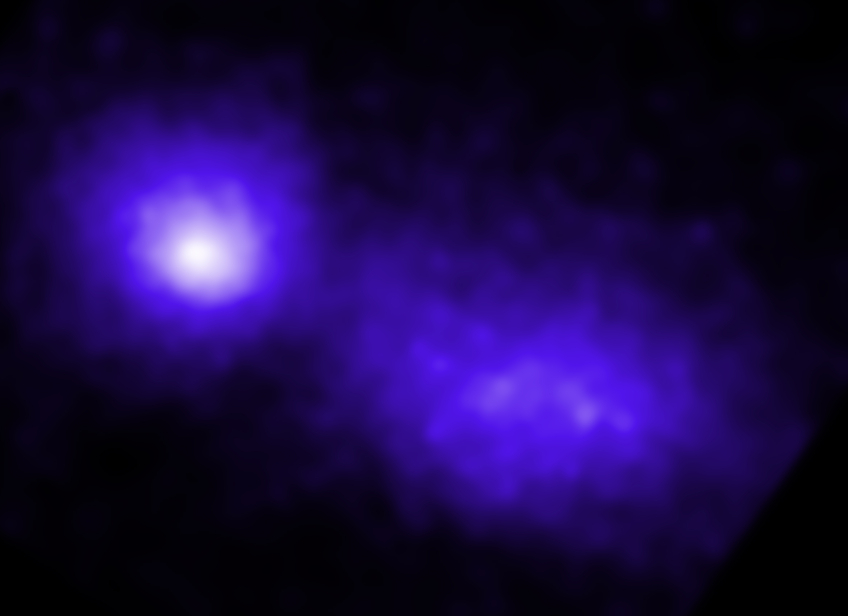
 Credit: NASA/CXC/RIKEN/L. Gu et al
Credit: NASA/CXC/RIKEN/L. Gu et al
Inexorable
There's no defying gravity. Scientists have witnessed the truth of this adage on all mass scales, and have recently seen it at work on one of the largest scales imaginable, the scale of clusters of galaxies. Shown above is an X-ray image from the Chandra X-ray Observatory of two rather anonymous galaxy clusters, called 1E2215 and 1E2216, located about 1.2 billion light years from Earth (so seen as they were when the Universe was 1.2 billion years younger). The Chandra X-ray image, along with other multiwavelength images in the optical and radio, have captured the two clusters at an unusual time, just as they are about to smash together, driven by the inexorable gravitational attraction between them. Such large-scale cluster collisions are some of the most powerful events known. and are the primary way in which the structure of the Universe grows and evolves. These collisions effectively happen in slow motion, taking billions of years play out. As the clusters fall together, differential gravitational effects distort the matter distributions, pulling the clusters apart, perhaps driving matter into the maws of hungry supermassive black holes at the centers of active cluster galaxies, or perhaps fueling bursts of new star formation. These observations help test computer simulations of these powerful, slow motion cluster collisions, helping us to better understand the cosmic web which structures the material Universe. Like all bystanders, we think we know what's about to happen but nevertheless cannot look away.
Published: July 1, 2019
<
HEA Dictionary ● Archive
● Search HEAPOW
● Other Languages
● HEAPOW on Facebook
● Download all Images
● Education ● HEAD
>

Each week the HEASARC
brings you new, exciting and beautiful images from X-ray and Gamma ray
astronomy. Check back each week and be sure to check out the HEAPOW archive!
Page Author: Dr. Michael F. Corcoran
Last modified Monday, 26-Feb-2024 17:34:40 EST


